
Have you ever wondered how your climbing shoes are made, what it takes to design, test, feedback, test again and eventually put them into production? Have you ever thought about where the inspiration for a new shoe comes from and the skill it takes to hand craft the shoes which will edge, smear, hook and jam you up your favourite route or latest project?
If so and you´re interested, join us on a guided tour through the Ocún climbing shoes manufactory located in the heart of the Bohemian Paradise, Czech Republic.
A Factory Well Hidden
The workshop where Ozone's, Oxi's and all of Ocún's other climbing shoes are sewn is hidden right beside the main square in the romantic small town of Bělá pod Bezdězem. There is no signboard or advertisement. It's not really a secret, but without local knowledge you will struggle to find it.
Ocún now has more than just this factory, but this is the first and the oldest. The whole story of Ocún is tightly connected to it. The main office, the newer and bigger operation is about a hundred kilometres away. It is the new nerve centre, busy and important, but it is here in Bělá pod Bezdězem where the heart of Ocún truly beats.
When you first enter, your senses are hit by the steady staccato of sewing machines, warm light spreading down from the fluorescent tubes and the delicate, surprisingly sweet odour of the shoe glue. It is here where you can get hands on and see how rock shoes are made!
Anatomy of a Climbing Shoe
To understand the manufacturing process, it is necessary to divide the shoe into the two main parts – the upper part and the sole. The upper part is all that´s made of textile fibre or leather, the sole is basically all the rubber. Uppers are sewn first and passed to a second workroom where they are put onto the precious foot shaped 3D lasts ready to receive the rubber.
Together with the often intricately sewn uppers, the purpose of the last is to give the shoe its final shape. To make things a bit more complex and complicated, there´s also a midsole – a small part of a climbing shoe placed between the rubber and the sole. It´s not too big, but it´s yet another critical component, important because it determines the final stiffness and feel of your climbing shoe. It's a no brainer that a stiffer midsole will make a stiffer shoe, but how to tune for that particular style of shoe, how do you balance support with sensitivity? How to take account of heavier or lighter climbers?
Some things can't be hurried
It takes about three days for a single pair of climbing shoes to be born. It´s partly because most of the processes are carried out by hand, partly because some steps just need time - the glue used to bond the rubber to the shoe must be allowed to properly cure. If you didn't wait long enough, the shoes could fall apart.
"You really can't hurry here. If you rush, you will lose the quality" - Martin Sedlák, climbing shoes designer at Ocún.
Even with highly skilled workers there is still about 80 minutes of hand work time per pair during the three days that your shoes spend in the incubator. The rest is ripening!
Between the Sewing Machines
Let's focus on the first stage of the process now. Before you can start sewing anything, you have to cut the pieces you need out of the sheets of fibre and leather. For this special template like knives are used. You place them on the material and cut by pressing the knife under a heavy weight. Some shoes need seven or more intricately shaped pieces – cutting the material efficiently, even with a pattern needs care and a good eye!
The cut pieces are organised into sets of ten pairs and passed to sewing. The elements of the sewing process are divided amongst the sewing team, so that each team member can focus on a particular part of the process to ensure the highest quality and efficiency.
The seamstresses sit behind the sewing machines in two rows. They are focused, they´re only looking at their own fingers as they deftly move the fibre under the needles. Subdued melodies of popular songs from the radio and occasional joke can be heard over the clatter of the machines.
It's reassuring to know that your climbing shoes are still made in the fair old way, almost entirely by hand. No automated production line could ever manage the work as precisely as these workers with years of experience. Still, you have to be careful not to slip into an easy routine. Therefore the seamstresses regularly switch the styles and elements they are working on from the simplest to the most difficult shoes to make. It's important to maintain variety and interest, it's a key part of spreading and improving the knowledge and skill.
Leather or Vegan?
Every material has its pros and cons. "Natural leather is more comfortable and that´s why we often use it for the insoles. Synthetic leather on the other hand has better shape memory – it stretches according to the shape of your feet, but then shrinks again. That´s why the synthetic shoes remain their original form longer," says Martin. "Whole-leather shoes are more comfortable, but they can stretch and become too loose sooner. This is why the combination of natural and synthetic leather is optimal."
From time to time a special order for whole-vegan shoes arrives into the factory. We have a few whole-vegan models on offer but they´re mostly aimed for beginners and soft movers. If a high-end climber wishes to have their Ozone's or Oxi's vegan friendly, the sewers are able to replace the leather insole parts with microfibre cloth.
The last step your shoes undertake in sewing workroom is stitching the pull-on loops to the textile upper. Then all receive labels with specification and go to the second stage of the process – the rubber workroom.
Holy Last
The rubber workroom is bigger. Trolleys with shoes on lasts are everywhere. In between them specialized machine workers do their jobs prepping, working and finishing the shoes.
Here, the upper parts are put on the lasts which give them the final shape of your climbing shoes. Lasts matter a lot, everyone in the industry would tell you that. Developing the best shape of last is the essential thing – it´s almost like searching for a Holy Grail, except one type is not enough here. Developing a rock shoe last is a highly skilled process. It can take many months, even years of shaping, testing, sometimes a little trial and error to create a new rock shoe last – each is quite different according to the demands of the shoe to be made – entry level or high performance, men's, ladies, children…and then there are all the sizes! To see all the lasts racked up or moving around the factory is truly impressive.
You could say that the shoes designed for climbing on the tiniest footholds are made on lasts with shapes that seem to defy human anatomy. The purpose is obvious – compress the foot, support the proper distribution of the inner forces so that even the smallest part of your shoe will hold you on the rock. These shoes are also made stiffer. The shoes for slab climbing on the other hand should not be as tight and aggressive-looking because you need to stick to the surface of the rock with larger area of the sole. Rubber matters a lot here. Adhesion is the key and of course your willingness to believe it will work!
Rubber Alchemy
Rubber is a favourite topic of all climbers - the friction, the durability. Some climbers discuss it with the same passion as betas for hard routes.
For most of the models we developed our own mixture. It was a long process, we learnt a lot with many trials and experiments. We are now pretty confident when it comes to our formulas performance and quality. The rubber development takes place in a secret Czech lab, lots of testing naturally on the sandstone of our Bohemian Paradise, and eventually the final product is delivered to our factory.
Applying the glue to the uppers is another highly skilled, time consuming process – the glue has to be precisely painted onto the uppers. Not too thin, not too thick, only where you wish to place the rubber. Particular care must be taken applying the glue where the rand will be placed, you really don't want to spoil the shoes with messy looking glue on the uppers!
The rubber has to be carefully prepared as well. Shapes precisely cut, edges bevelled so that they fit each type of shoe, each size of shoe precisely. The rubber is lightly abraded to create a surface which will absorb the glue and stick firmly. Each rubber element on a shoe is different – the sole, toe rand, sling shot rand and heel cup must be specifically prepared for the best results. When all are glued firmly in place and properly cured, the rough edges are removed with a grinder for a perfect finish. Only then can the final step of applying the thermotransfer logos be done and the shoes are complete.
So what is left now? Only to put the shoes into boxes in which they travel to our warehouse nearby. From there they go to the shops and then to you and wherever you choose to take them. We always love to hear all the stories about where our shoes go climbing – we even hope a few pairs might travel back to our home and the famous sandstone towers of the Bohemian Paradise – hope to see you there!
If you'd like to find out more, check out our video about the manufacture of the Oxis:
A special thank you to our photographers, Jakub Frič and Tomáš Hejzlar!





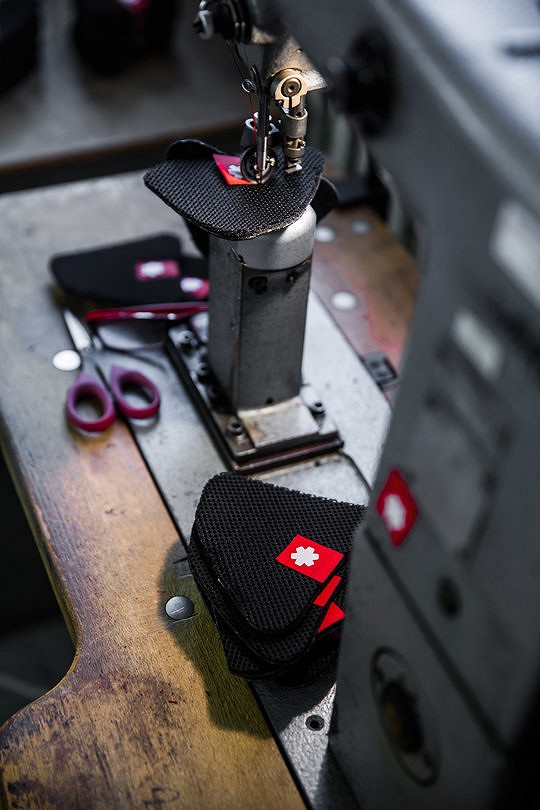
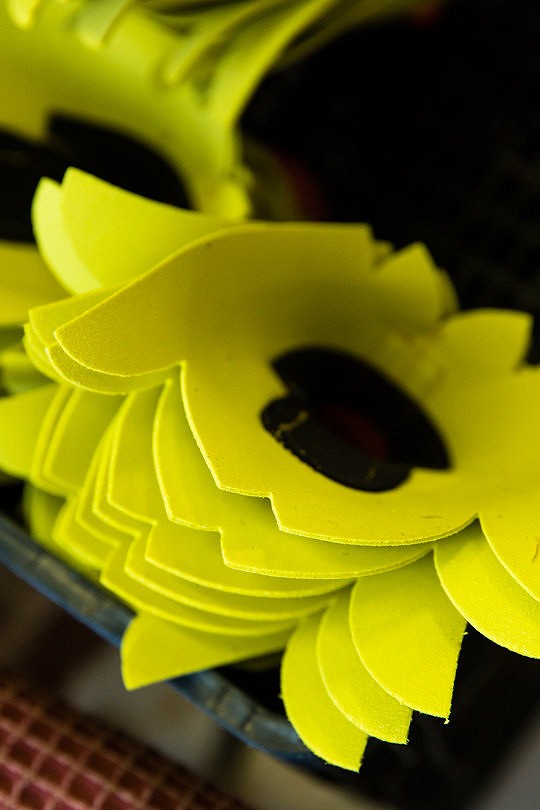




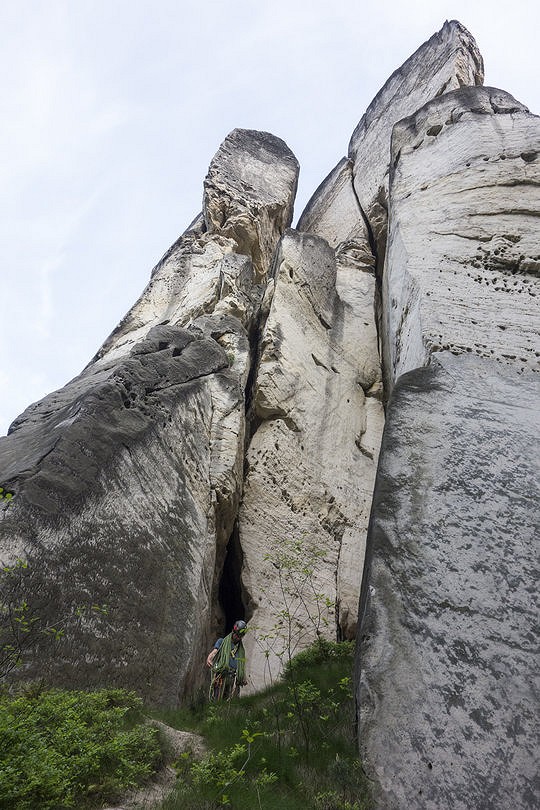
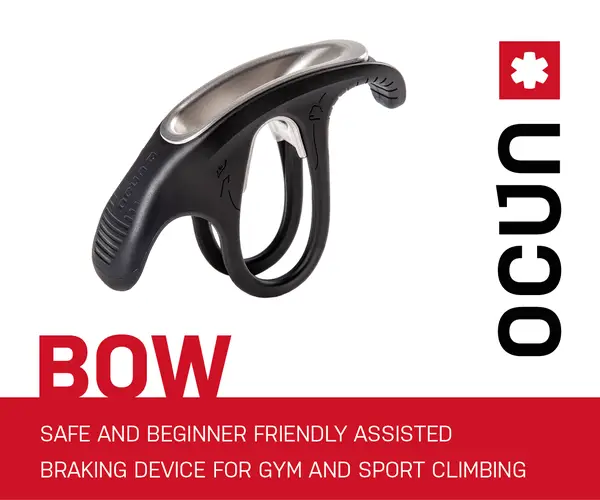

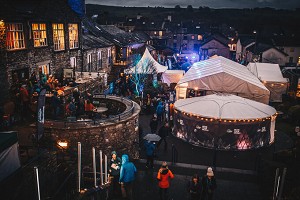
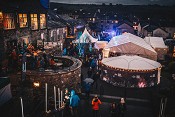
Comments